Overview of Roll Forming Equipment
Roll forming is a continuous bending operation in which a long strip of metal, typically coiled steel, is passed through consecutive sets of rolls, or stands, each performing only an incremental part of the bend until the desired cross-section profile is obtained. Roll forming equipment is essential in various industries, providing a versatile and efficient means to produce complex metal profiles with high precision and consistency.
In this comprehensive guide, we’ll delve into the intricate world of roll forming equipment, covering everything from basic overviews and detailed machine guides to specific models and their functionalities. By the end of this article, you will have a clear understanding of the roll forming process, equipment types, key components, working processes, and much more.
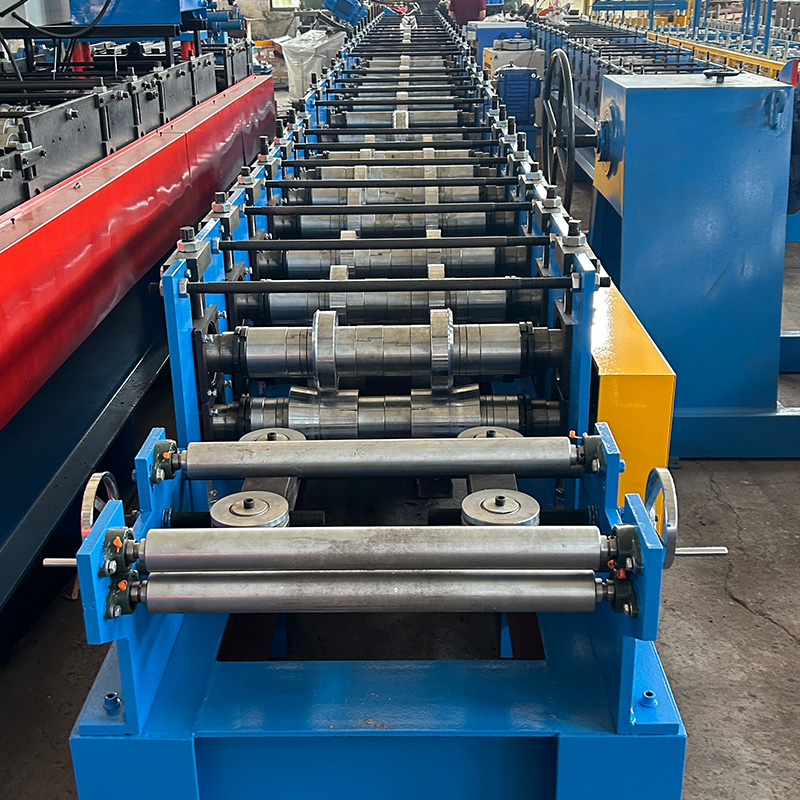
Types of Roll Forming Equipment
Roll forming equipment can vary widely based on the application and the type of metal being formed. Here is a table outlining the common types of roll forming machines:
| Type of Roll Forming Machine | বর্ণনা |
|---|---|
| Standard Roll Formers | Basic machines used for simple metal profiles, suitable for various industries. |
| Precision Roll Formers | High-precision machines for intricate profiles requiring tight tolerances. |
| Inline Punching Roll Formers | Machines with integrated punching capabilities for creating holes and notches. |
| High-Speed Roll Formers | Designed for fast production speeds, ideal for large-scale manufacturing. |
| Duplex Roll Formers | Feature two sets of rolls for more complex profiles and quicker setup changes. |
| Flexible Roll Formers | Adaptable machines that can be quickly reconfigured for different profiles. |
| Portable Roll Formers | Compact and mobile units for on-site roll forming applications. |
| Custom Roll Formers | Tailored machines built to specific customer requirements and profiles. |
| Hydraulic Roll Formers | Utilize hydraulic power for higher force and precision in forming processes. |
| Servo Roll Formers | Use servo motors for precise control and high-speed operations. |
Working Process of Roll Forming Equipment
The roll forming process is a sequence of steps, each contributing to shaping the metal into the desired profile. Here’s a detailed look at how roll forming equipment operates:
- সামগ্রী লোডিং: Coiled metal strips are loaded onto the uncoiler, which feeds the material into the machine.
- ফিডিং সিস্টেম: The material is fed through a series of rollers that gradually shape it.
- রোল গঠন: The metal passes through consecutive sets of rollers, each set performing a part of the bending operation.
- Punching and Cutting: Integrated punching units can create holes and notches as needed. After forming, the material is cut to the desired length.
- Discharge: The finished profile is discharged and collected for further processing or packaging.
Key Components and Their Functions
Understanding the components of roll forming equipment is crucial for grasping how these machines work. Here’s a table summarizing the main components:
| Component | Function |
|---|---|
| আনকোয়লার | Holds and unwinds the coiled metal strip. |
| Feeder | Ensures consistent and precise feeding of the material into the rollers. |
| রোলারসমূহ | Series of rollers that incrementally bend the metal into the desired shape. |
| Punching Unit | Creates holes, notches, or other features in the metal strip. |
| Cutting Unit | Cuts the formed metal to the required length. |
| নিয়ন্ত্রণ ব্যবস্থা | Manages the operation of the machine, including speed, tension, and precision. |
| Discharge Unit | Collects the finished profiles for further handling. |
-
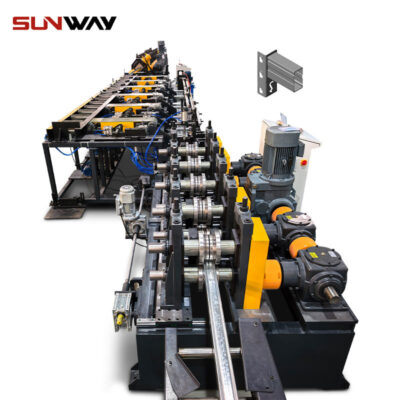 Storage Rack Shelf Box Panel Making Machine Steel Storage Rack System Box Beam Roll Forming Line
Storage Rack Shelf Box Panel Making Machine Steel Storage Rack System Box Beam Roll Forming Line -
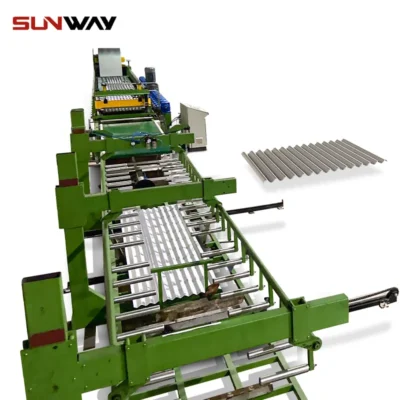 ঢেউতোলা প্যানেল রোল তৈরির মেশিন
ঢেউতোলা প্যানেল রোল তৈরির মেশিন -
 দ্রাক্ষাক্ষেত্র পোস্ট রোল ফর্মিং মেশিন
দ্রাক্ষাক্ষেত্র পোস্ট রোল ফর্মিং মেশিন -
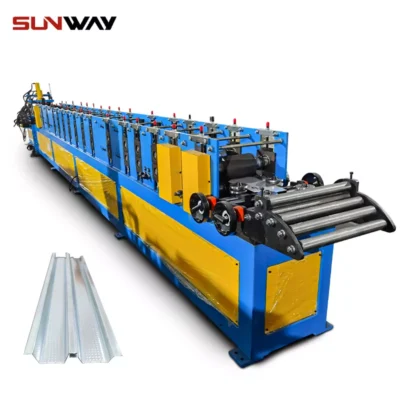 হালকা গেজ ইস্পাত রোল গঠন মেশিন
হালকা গেজ ইস্পাত রোল গঠন মেশিন -
 স্বয়ংক্রিয় আকার পরিবর্তনযোগ্য সিগমা Purlin রোল ফর্মিং মেশিন
স্বয়ংক্রিয় আকার পরিবর্তনযোগ্য সিগমা Purlin রোল ফর্মিং মেশিন -
 স্বয়ংক্রিয় আকার পরিবর্তনযোগ্য CZ Purlin রোল ফর্মিং মেশিন
স্বয়ংক্রিয় আকার পরিবর্তনযোগ্য CZ Purlin রোল ফর্মিং মেশিন -
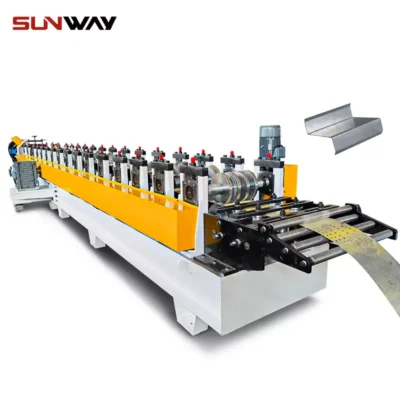 স্বয়ংক্রিয় আকার পরিবর্তনযোগ্য Z Purlin রোল তৈরির মেশিন
স্বয়ংক্রিয় আকার পরিবর্তনযোগ্য Z Purlin রোল তৈরির মেশিন -
 অটো সাইজ চেঞ্জেবল সি ইউ পারলিন রোল ফর্মিং মেশিন
অটো সাইজ চেঞ্জেবল সি ইউ পারলিন রোল ফর্মিং মেশিন -
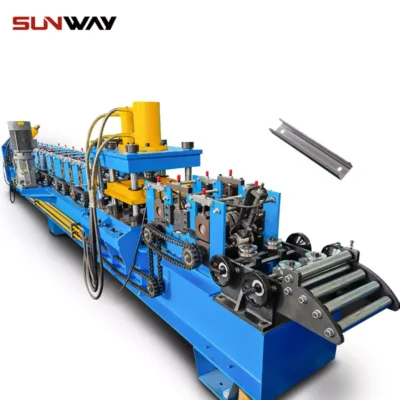 সি সেকশন ব্রেসিং ওমেগা স্টোরেজ র্যাক খাড়া পোস্ট রোল ফর্মিং মেশিন
সি সেকশন ব্রেসিং ওমেগা স্টোরেজ র্যাক খাড়া পোস্ট রোল ফর্মিং মেশিন
Machine Speed and Efficiency
Efficiency and speed are critical factors in roll forming operations. The following table outlines typical speeds and efficiencies for different types of roll forming machines:
| Machine Type | Speed (m/min) | Efficiency (%) |
|---|---|---|
| Standard Roll Formers | 20-30 | 85 |
| Precision Roll Formers | 10-20 | 90 |
| High-Speed Roll Formers | 40-60 | 80 |
| Duplex Roll Formers | 25-35 | 87 |
| Flexible Roll Formers | 15-25 | 88 |
| Portable Roll Formers | 5-10 | 70 |
| Hydraulic Roll Formers | 10-20 | 92 |
| Servo Roll Formers | 30-50 | 85 |
Customized Mechanical Parameters
Roll forming equipment can be customized to meet specific requirements. Here’s a table detailing possible customizations:
| Parameter | বর্ণনা |
|---|---|
| Material Thickness | Customizable range to accommodate different metal thicknesses. |
| Profile Width | Adjustable to create profiles of varying widths. |
| Roller Diameter | Can be modified to suit different profile complexities. |
| Cutting Length | Programmable for precise length control. |
| Punching Pattern | Configurable to create specific hole patterns and shapes. |
| Machine Size | Custom sizes to fit specific production spaces. |
| Speed Control | Variable speed settings to optimize production rates. |
Applications and Uses
Roll forming equipment is used in various industries, producing a wide range of metal profiles. Here’s a table showcasing some common applications:
| Application Area | বর্ণনা |
|---|---|
| নির্মাণ | Profiles for building structures, roofing, and cladding. |
| অটোমোটিভ | Parts for vehicles, such as frames, bumpers, and panels. |
| Aerospace | Lightweight profiles for aircraft components. |
| ইলেকট্রনিক্স | Enclosures, racks, and frames for electronic devices. |
| আসবাবপত্র | Metal parts for furniture, such as legs, frames, and supports. |
| Energy | Components for solar panels, wind turbines, and power plants. |
| Transportation | Profiles for railways, shipping containers, and trailers. |
| Agriculture | Metal parts for machinery and storage facilities. |
Installation, Operation, and Maintenance
Proper installation, operation, and maintenance are crucial for the efficient performance of roll forming equipment. Here’s a table outlining these aspects:
| Aspect | বিস্তারিত |
|---|---|
| Installation | Site preparation, foundation setup, machine alignment, and calibration. |
| পরিচালনা | Training operators, setting up profiles, and managing production cycles. |
| Maintenance | Regular inspections, lubrication, part replacements, and troubleshooting. |
Suppliers and Price Range
When sourcing roll forming equipment, it’s important to compare suppliers and prices. Here’s a table with some supplier options and price ranges:
| Supplier | Price Range |
|---|---|
| ABC Roll Formers | $50,000 – $100,000 |
| XYZ Machinery | $40,000 – $90,000 |
| FormTech Solutions | $60,000 – $120,000 |
| MetalWorks Inc. | $70,000 – $130,000 |
| SteelMaster Co. | $55,000 – $110,000 |
Choosing a Supplier
Selecting the right supplier is critical for ensuring quality and reliability. Here are some factors to consider:
| কারণ | বিস্তারিত |
|---|---|
| Reputation | Look for suppliers with a strong track record and positive reviews. |
| কাস্টমাইজেশন | Ensure the supplier can meet your specific requirements. |
| সমর্থন | Check for after-sales support and maintenance services. |
| মূল্য | Compare prices to get the best value for your investment. |
| Delivery Time | Consider lead times and delivery schedules. |
Advantages and Limitations
Like any manufacturing process, roll forming has its pros and cons. Here’s a comparison:
| Aspect | Advantages | Limitations |
|---|---|---|
| Precision | High accuracy and consistency in profiles. | Initial setup can be time-consuming. |
| দক্ষতা | Suitable for large-scale production. | Limited to specific profile shapes. |
| Material Usage | Minimal waste, making it cost-effective. | Not ideal for small batch sizes. |
| নমনীয়তা | Capable of forming complex profiles. | Requires specialized machinery for different profiles. |
| Strength | Maintains material strength and integrity. | High initial investment in equipment. |
Specific Metal Powder Models
In roll forming, various metal powder models are used for different applications. Here’s a list of specific models and their descriptions:
- MP-1000: Ideal for high-strength profiles in automotive and aerospace applications.
- MP-2000: Suitable for corrosion-resistant profiles used in marine and construction industries.
- MP-3000: Designed for lightweight profiles in electronics and furniture manufacturing.
- MP-4000: High-precision model for intricate profiles requiring tight tolerances.
- MP-5000: Versatile model for general-purpose applications across various industries.
- MP-6000: Optimized for high-speed production with minimal waste.
- MP-7000: Customizable model for unique profiles and complex shapes.
- MP-8000: High-efficiency model for large-scale manufacturing operations.
- MP-9000: Heavy-duty model for thick metal profiles in industrial applications.
- MP-10000: Advanced model with integrated punching and cutting capabilities.
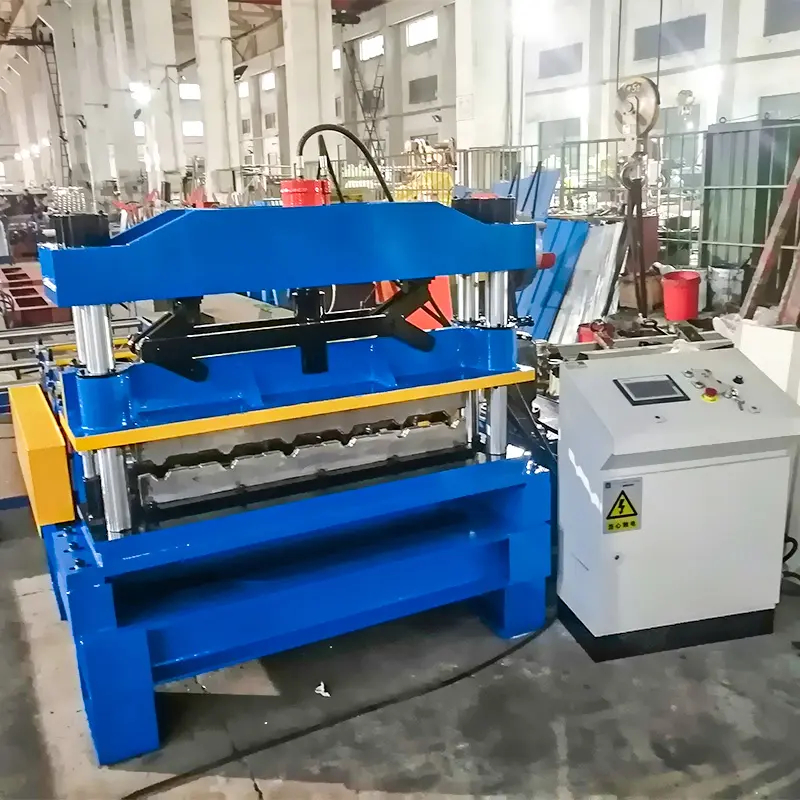
FAQ
Q: What materials can be used in roll forming?
Most metals, including steel, aluminum, copper, and alloys.
How does roll forming compare to other processes?
Roll forming is more efficient for long profiles and large production runs compared to stamping or extrusion.
Q: Can roll forming create complex shapes?
Yes, with the right equipment and setup, very complex profiles can be achieved.
Q: What are the maintenance requirements for roll forming equipment?
Regular inspections, lubrication, and timely replacement of worn parts.
Q: How to choose the right roll forming machine for my needs?
Consider your production requirements, material types, and profile complexities.
Q: Is roll forming environmentally friendly?
Yes, it produces minimal waste and uses materials efficiently.
উপসংহার
Roll forming equipment plays a pivotal role in modern manufacturing, offering unparalleled precision, efficiency, and versatility. Whether you’re in construction, automotive, aerospace, or any other industry requiring high-quality metal profiles, understanding the intricacies of roll forming equipment will help you make informed decisions to optimize your production processes. By considering the types of machines available, their components, working processes, and customization options, you can select the best roll forming solution tailored to your specific needs.
